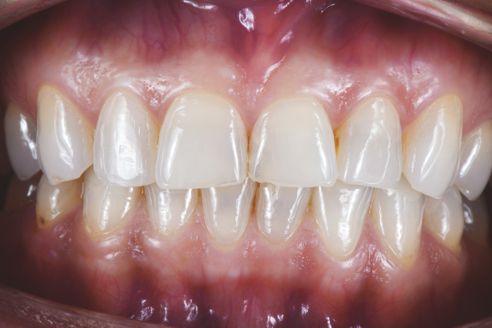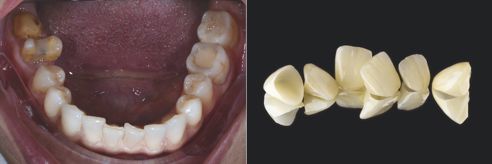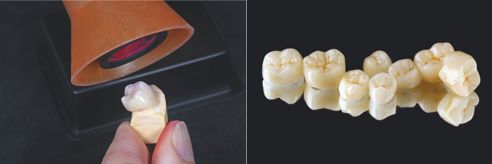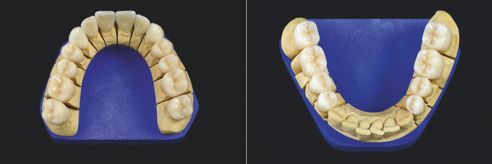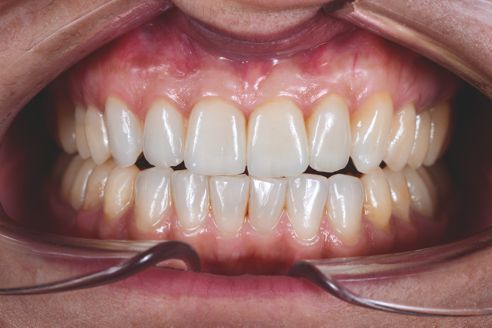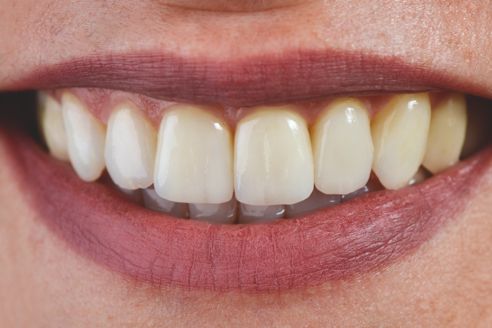Glass and hybrid ceramics combined in one comprehensive restoration!
Using the example of a comprehensive restoration in the upper and lower jaw, MDT Björn Czappa (m.c. zahntechnik, Oldenburg, Germany) explains how the materials of glass and hybrid ceramics can be combined in a single restoration, and the esthetic results that are possible with this technique. In this case study, he also shows how VITA ENAMIC (VITA Zahnfabrik, Bad Säckingen, Germany) crowns can be characterized with light-curing stains to reproduce the esthetics of natural teeth.
1. Initial situation
The patient had suffered from severe headaches and neck pain for a long time. A measurement of the temporomandibular joint confirmed the suspicion of a functional disorder. The anterior maxillary teeth were irregularly abraded, producing an imbalance (Fig. 1). The already restored posterior tooth regions also exhibited significant deficits (Fig. 2). After making a splint, the patient was pain-free within a short time. Following a successful three-month splint treatment, she then decided on a corresponding complete restoration as a permanent solution.
2. Restoration with glass and hybrid ceramics
"With the patient case presented here, we embarked on uncharted territory as a dental laboratory. While the anterior teeth of the maxilla were to be restored with pressed glass ceramic (Fig. 3), everything in the posterior tooth area called for the VITA ENAMIC hybrid ceramic, which we used for the first time in this case (Fig. 4)," reports MDT Björn Czappa. The hybrid ceramic is significantly more elastic than traditional dental ceramics and acts as a sort of shock absorber. The VITA ENAMIC posterior tooth crowns were manufactured using the CAD/CAM process.
3. Characterization and finalization
To reproduce the natural esthetics in the posterior tooth area, the hybrid ceramic restorations were characterized using the light-curing stains from the VITA ENAMIC STAINS KIT and slightly individualized using the veneering composite VITA VM LC flow (VITA Zahnfabrik) (Fig. 5). For the characterization, the hybrid ceramic restorations were conditioned, and then the stains were applied. In the next step, the intermediate polymerization was performed, and finally the surfaces were sealed with VITA ENAMIC GLAZE, increasing the durability of the stain characterization in the moist oral environment (Fig. 6).
4. Summary
"For us, the processing of these VITA materials was a first, and I can say that they were outstanding to work with," says MDT Björn Czappa. His conclusion: If you exercise a little patience and take your time as you go and consistently follow the manufacturer's instructions, very good results are possible (Fig. 7 through 11).
A special thank you to Ms. Marita Heeren for the photographic images.
Report 03/16



